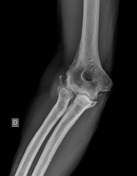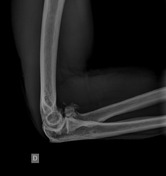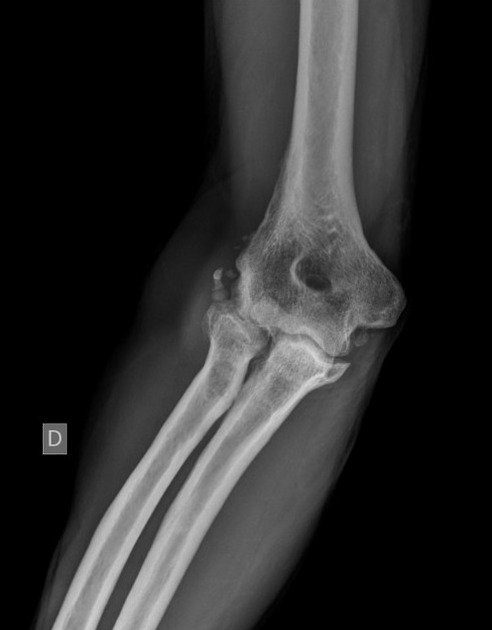Presentation
Patient was hit by a motorcycle.
Patient Data



Elbow radiographs revealed a comminuted radial head fracture (Mason type III) and a fracture to the lateral aspect of the proximal ulna without the involvement of the coronoid process.
Case Discussion
Radial head fractures are the most common fractures of the elbow.
Displaced and/or comminuted fractures usually present with associated injuries, mostly the coronoid process and the proximal ulna.
Another possible associated injury would be the disruption of the interosseous membrane and distal radioulnar ligaments, this would cause axial instability of the forearm, characterizing an Essex-Lopresti lesion. It is important to rule out this injury when a radial head fracture is noted.
The treatment of radial head fractures is guided by the Mason classification and the presence of associated injuries.